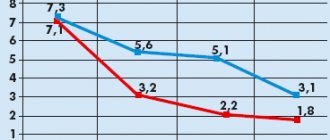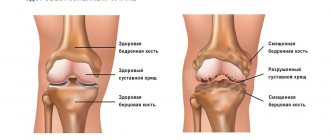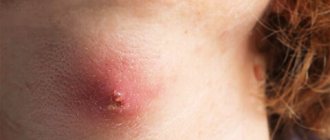Pneumonia is an infectious disease that develops under the influence of various microorganisms. Cough with pneumonia in children and adults is one of the main signs of the disease. At the Yusupov Hospital, pulmonologists provide comprehensive treatment for pneumonia, including both drugs that destroy infectious agents and drugs that help reduce cough.
The therapy clinic employs professors and doctors of the highest category, who are leading experts in the treatment of respiratory diseases. They take an individual approach to the treatment of each patient, use antitussive and mucolytic drugs depending on the characteristics of the cough, physiotherapeutic procedures, and massage. Cough due to pneumonia in children is treated in partner clinics.
Types of cough
Does cough occur with pneumonia? In the initial stage of pneumonia, patients are bothered by a dry cough. As the amount of bronchial secretion increases, it becomes moist and produces sputum. A barking cough is very rare with pneumonia. It occurs when there are complications from the respiratory system.
Spasmodic cough, associated with spasms and whistling sounds, occurs when bronchial obstruction and bronchospasm occur in patients suffering from pneumonia. It can occur at any time of the day or night, but more often bronchospasm occurs while awake. A dry, hacking cough is called staccato.
What is the cough associated with pneumonia in children? Pertussis-like cough occurs in attacks that follow each other, perhaps in both children and adults. Coughing attacks bring the body to extreme exhaustion. When foreign objects enter the respiratory tract, a bitonal cough occurs - a low tone alternates with a high one. A hoarse cough is evidence of the lack of correct restoration of respiratory function.
A dry cough with pneumonia develops due to bacterial or viral damage to the lung tissue. It is caused by local irritation of the bronchi. In this case, sputum is not produced. With viral pneumonia, a dry cough may produce a small amount of sputum streaked with blood.
A forced, wet cough is typical of pneumonia. It is explained by the presence of mucus in the respiratory tract, which the body tries to remove by coughing. Sputum can be serous, purulent, mixed. With lobar pneumonia, “rusty” sputum is released during coughing. The presence of blood in sputum may be evidence of a malignant neoplasm or tuberculosis.
With viral pneumonia, a barking cough has the following features:
- urge to cough, not accompanied by sputum production;
- at the end of any coughing attack, irritation of the mucous membrane of the pharynx occurs, which is accompanied by the release of a small amount of viscous sputum;
- attacks are characterized by cyclicity.
Cough can occur for several reasons:
- direct irritation of respiratory tract receptors under the influence of pneumonia pathogens;
- allergic reactions;
- intoxication;
- entry of foreign bodies into the respiratory tract;
- vasomotor disorders;
- external pressure on the vagus nerve;
- primary central nervous system;
- reflex irritation.
Symptoms
Symptoms vary depending on the person's age and the cause of the pneumonia and may include:
- rapid breathing (in some cases this is the only symptom);
- wheezing breathing (audible to a doctor through a stethoscope, or even audible to strangers without a stethoscope);
- difficulty breathing: may be manifested by flaring of the nostrils, breathing using the abdominal muscles, retraction of the intercostal spaces and fear in the patient’s eyes;
- fever;
- cough;
- nasal congestion;
- trembling from chills;
- vomiting;
- chest pain;
- abdominal pain (muscular, as the abdominal muscles are involved in a strained cough or help with difficulty breathing);
- decreased activity;
- loss of appetite (in older children) or poor sucking (in infants), which can lead to dehydration;
- bluish or gray color of lips and nails (in severe cases).
If the source of pneumonia is located in the lower part of the lungs, closer to the abdomen, you may experience abdominal pain or vomiting, without problems breathing.
Antibacterial therapy for pneumonia
The cause of cough during pneumonia is an inflammatory process caused by a variety of microorganisms. The cough goes away only after the inflammatory process is eliminated. Pulmonologists at the Yusupov Hospital begin initial antibacterial therapy immediately after the patient’s admission to the therapy clinic.
Since it takes some time to isolate the causative agent of pneumonia and determine its sensitivity to antibiotics, at the initial stages the antibiotic is chosen empirically, based on the clinical picture of the disease and X-ray data. After identification of microorganisms, selective drugs are used to minimize the impact on the patient's saprophytic flora, reduce the risk of superinfection and avoid immunosuppression.
Therapists at the Yusupov Hospital use antibacterial drugs that are highly effective in treating pneumonia of various origins. The choice of antibiotic is influenced by the following characteristics of the body: age, history of allergies, kidney and liver function, pregnancy, severity of the disease.
When prescribing antibacterial therapy, doctors at the Yusupov Hospital take into account the possible side effects of antibiotics and avoid prescribing medications that can cause them. When choosing an antibacterial drug in patients with pneumonia against the background of chronic renal failure, reduce the dose of the drug secreted by the kidneys or prescribe an antibacterial drug that is metabolized in the liver. For patients with signs of functional liver failure, the doses of drugs that are metabolized in this organ are reduced or antibiotics excreted from the body by the kidneys are prescribed.
If a patient has heart failure and obesity, the concentration of antibiotics in the blood increases, which is associated with the risk of side effects. In this case, long-acting antibiotics (cefoperazone, roxithromycin, ceftazidime, clarithromycin) are not used. Elderly and senile people are prescribed drugs that are most effective with minimal side effects.
Pulmonologists give preference to drugs that create high and stable concentrations in sputum, which allows the patient to quickly get rid of cough. Amoxicillin meets these requirements. When treating severe pneumonia, broad-spectrum antibiotics are prescribed that are active against betalactamase-producing staphylococci and streptococci, as well as gram-negative microorganisms (Escherichia coli, Enterobacteriaceae, Haemophilus influenzae, Klebsiella). “Protected” aminopenicillins (ampicillin sulbactam, amoxicillin clavulanate) or second generation celafosporins (cefuroximaxetine) are used.
For severe pneumonia in patients requiring intensive care, the drugs of choice are third-generation cephalosporins (cefotaxime or ceftriaxone), which are used in maximum doses in combination with macrolides for parenteral administration (spiramycin, erythromycin). After the elimination of the inflammatory process in the lungs, patients' cough decreases.
Causes
Pneumonia is caused by various microbes (viruses, bacteria, fungi and parasites). However, in most cases the cause is viruses. These include adenoviruses, rhinoviruses, influenza virus (influenza), respiratory syncytial virus (RS virus), coronaviruses, and parainfluenza virus (which can also cause false croup).
Often, pneumonia begins after an upper respiratory tract infection (URTI), and symptoms of pneumonia appear after 2-3 days of a “cold” or sore throat. Sometimes in such cases they say that the infection “went down to the lungs.” Fluid, white blood cells and “all sorts of debris” begin to accumulate in the air spaces of the lungs and block the unobstructed passage of air, complicating gas exchange.
Children with pneumonia caused by bacteria usually become very ill; against the background of complete health, a high fever with chills rises sharply, and shortness of breath appears. Children with pneumonia caused by viruses often have a more gradual onset of acute respiratory viral infections, although wheezing may be more pronounced.
Some symptoms provide important clues about which microorganism is causing pneumonia. For example:
- Pneumonia caused by mycoplasma is very common in older children and adolescents. In addition to the usual symptoms of pneumonia, it causes a severe sore throat, headache and rash.
- In infants, pneumonia caused by chlamydia can cause conjunctivitis and be mild and without fever.
- When pneumonia is caused by whooping cough, the baby may have characteristic, prolonged coughing spells, during which they may turn blue from lack of air or make the classic screaming sound when trying to take a breath (reprise). See video. Fortunately, there is a whooping cough vaccine that protects against both this form of pneumonia and the disease.
- The length of the incubation period (the time interval between infection and the onset of symptoms) varies depending on the organism causing the pneumonia (for example, 4 to 6 days for the RS virus and 18 to 72 hours for the flu).
Treatment of cough with pneumonia
Pulmonologists at the Yusupov Hospital prescribe the following drugs to reduce cough:
- mucoactive agents that change the properties of sputum;
- expectorants that affect the physical and chemical properties of sputum and facilitate its separation;
- combination drugs;
- mucoregulating drugs.
Acetylcysteine, bromhexine and ambroxol are highly effective. Among drugs with mucoregulatory action, the most widely known are drugs based on carbocisteine. Preparations of reflex action have an expectorant effect: ipecac root, licorice, marshmallow, thermopsis herb, thyme, plantain leaves, eucalyptus, anise fruits. Resorptive drugs (ammonium chloride, sodium and potassium iodide, terpene hydrate) after ingestion and enter the systemic circulation, are secreted by the bronchial mucosa, stimulate bronchial secretion and partially dilute sputum. For a dry cough, pulmonologists prescribe plenty of fluids, codeine, Tusuprex, Stoptussin. After the appearance of sputum, they are canceled.
Patients at the Yusupov Hospital are given ultrasonic inhalations with cough-reducing medications and alkaline solutions. Chest massage and physical therapy promote the removal of sputum. Thermal procedures are effective.
If you are worried about a cough, call the Yusupov Hospital, where pulmonologists will determine its cause and prescribe effective treatment. Physiotherapy treatments are available at the rehabilitation clinic. An integrated approach promotes a speedy recovery.
Bronchitis
Bronchitis is an inflammation of the inner lining of the bronchi. Occurs as a result of the following reasons:
- Infectious lesion . Exposure to viruses (including influenza, adenovirus), bacteria, atypical microorganisms and fungi.
- Chemical exposure . Active smoking for a long time, the presence of harmful impurities in the air, fumes at work, increased levels of smoke and dust in the air.
- Internal factors . An allergic reaction in the form of inflammation of the bronchial mucosa, chronic diseases of the nasopharynx of an infectious-inflammatory nature, cardiovascular diseases.
Symptoms of bronchitis
Acute bronchitis is accompanied by the following symptoms:
- severe coughing attacks;
- discomfort and pain when inhaling;
- the appearance of wheezing during breathing;
- shortness of breath at rest, worsening with physical activity;
- increased body temperature;
- general weakness, fatigue, apathy;
- headache;
- chills.
Timely treatment helps eliminate the disease within 7-10 days. Lack of treatment increases the risk of progression to a chronic form of bronchitis , in which some symptoms are observed constantly. For example, shortness of breath occurs at the slightest exertion, even without exacerbation.
Treatment of bronchitis
Treatment for acute bronchitis is relatively simple if you consult a doctor promptly. Suitable medications are prescribed:
- antibiotics for bacterial infections;
- antiviral, immunostimulants for viral infections;
- anti-inflammatory and anesthetics to relieve symptoms.
If the disease is caused by an allergic reaction, antihistamines are prescribed and contact with the source of the allergen is avoided. Treatment of chronic bronchitis requires more time and an integrated approach. First of all, foci of infection are eliminated, drugs that strengthen the immune system are selected. In each individual case, therapy is based on preliminary diagnosis.








